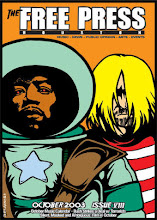The Damned United

The Damned United gives a warts and all view of one of England's most famous sports personalities. Michael Sheen plays Brian Clough a soccer coach who takes the helm of championship team Leeds United. Previously Leeds' coach was Clough's archrival Don Revie (a winning Colm Meaney). This is a sports movie that pushes the actual sport to the background and pulls the ego of the lead character to the foreground.
The action starts in 1974 with Clough taking over the Leeds team even after bad mouthing them in the press. Flashbacks take the story back six years to establish how Clough built his reputation. Events bounce back to the present only to once again flashback a few years to illustrate how Clough and Revie's leadership methods clash. The flashbacks also depict the relation of Clough with his loyal assistant coach Peter Taylor (Timothy Spall). Only Taylor has refused to join Clough at Leeds.
No sooner has Clough shown up for work at Leeds than the hatred of his players to the new coach surfaces. It doesn't help that Clough makes outspoken remarks to the press and verbally spars with his employers, the owners of the team. The main focus of Damned United seems to be the joy of revealing how Clough brandishes his hubris.
As penned by Peter Morgan (of Frost/Nixon and The Queen fame) The Damned United wants to examine a place and time as seen through the eyes of a larger than life personality. Not being British didn't prevent me from enjoying the various 70s-era newscasts (both real and recreated) that chronicle Clough's public squabbles. Sheen gives this role all he's got, preening about with a stiff upper lip and slick hair. At one point he drunkenly calls Revie in the middle of the night to berate him, a scene that mirrors one of Morgan's best sequences from Frost/Nixon. Sheen has the spine of a man determined to win at any cost. Even the sanctity of his home and life long friendships are bargaining chips, if only in the short run. The Damned United shows, with great affection for its characters, how goals should be set on a higher plane. The air up there is sublime when the goal is accomplished.











